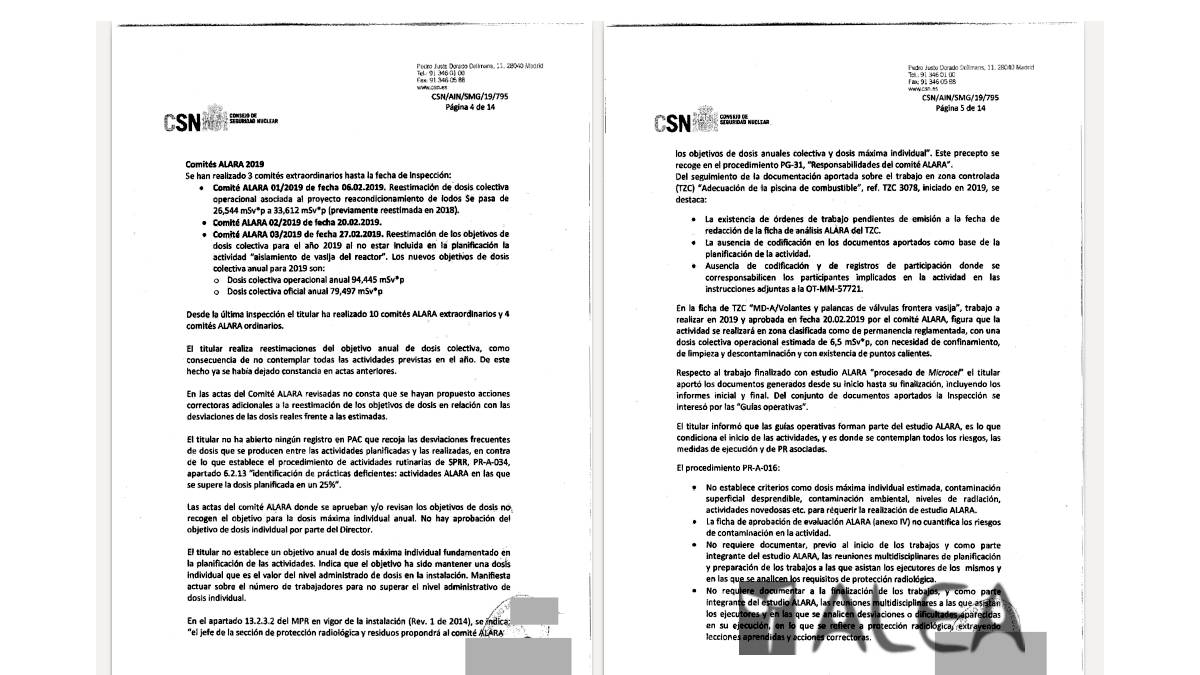
- The CSN has identified "deficiencies" in the planning of decommissioning works in the nuclear power plant and has warned that this situation has forced Nuclenor to carry out a reassessment of radiation risks. The regulator asks that the individual radiation doses received be taken into account, as well as to determine the collective doses provided.

This ![]() news was posted by Arabako Aleak and we brought it with the Creative Commons license.
news was posted by Arabako Aleak and we brought it with the Creative Commons license.
Nuclenor has twice modified the maximum levels of radiation workers may receive in preparation for the dismantling of the Santa Maria de Garoña nuclear power plant, as reported by the CSN in its latest audit of the Nuclear Safety Council.
Since 25 March, two CSN technicians have carried out an inspection in Garoña for three days to verify that Nuclenor complies with the radiation protection measures he plans to implement, which they have recorded in a report. The body that controls nuclear installations in Spain published the communiqué on Wednesday, which was released today by ALEA.
It describes that the committee set up to meet the ALARA criteria in Garoña since 2017 has held four regular meetings, but in this period it has had to hold another ten extraordinary meetings: four in 2017, three in 2018 and three in 2019, until the March audit took place. ALARA is an acronym for the English phrase As Low As Reasonably Achievable, which aims to ensure that persons operating in nuclear facilities receive the lowest possible dose of radiation.
In July 2017, the objectives for the year 2018 were set, measured according to the characteristics of "annual dose of collective operation" and "official annual collective dose": 118.84 mSv and 90.14 mSv per person, respectively. In May 2018, however, they had to re-evaluate this objective: Doses were increased to 185.39 mSv and 147.99 mSv. In this sense, they have argued that the reason for this was "the expansion of the works". In September 2018 it was possible to lower the targets (160.97 / 137.60), but the forecast for 2019 again failed: A total of 36 destinations were originally set, 69.36/53, although in February the forecast was raised to 94.44/79.49 for the second quarter.
The CSN inspectors have regretted that Nuclenor has confined himself to making further calculations on the ground. The inspectors have noted that in the minutes of the committee they have only proposed revaluations "in the light of the planned doses and deviations from the actual doses produced", without taking "any other measure that would allow the situation to be redirected". They remind the Board that when more than 25% of the planned dose is diverted, they must report the situation in the PAC Corrective Action Program, but they do not, despite the fact that the deviation in 2018 is 30%.
For his part, Nuclenor has accused Nuclenor of not taking into account the maximum annual doses to be received by the workers individually. The management of Garoña has recognized in the statement that it plays with the number of active workers in order not to exceed the individual doses established by the regulations. The leaders of Garoña have argued that the deviations have not been due to bad practices, but "to new actions and to the prolongation of the work in progress". They have also referred to the "uncertainties that exist in future scenarios" that are taking place.
